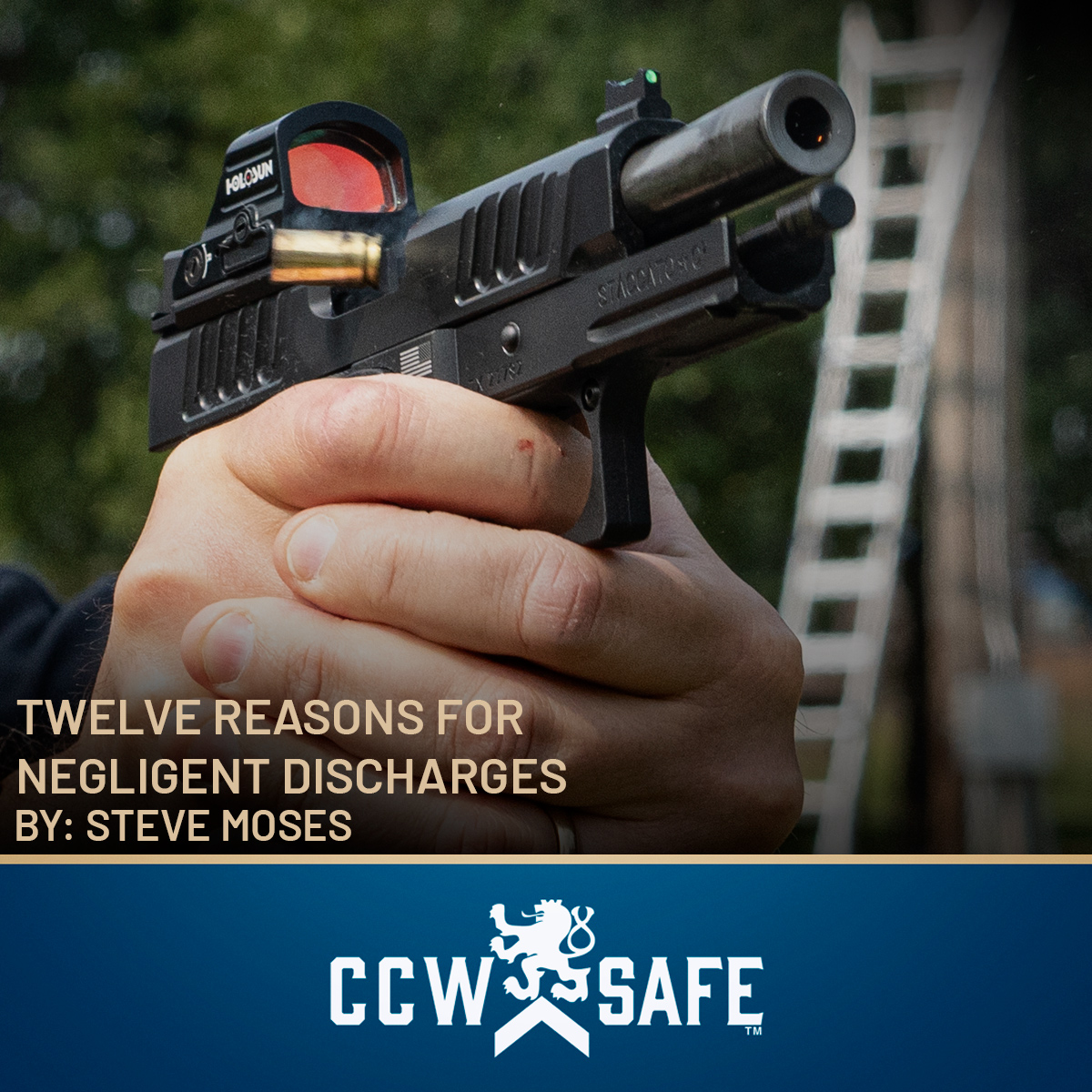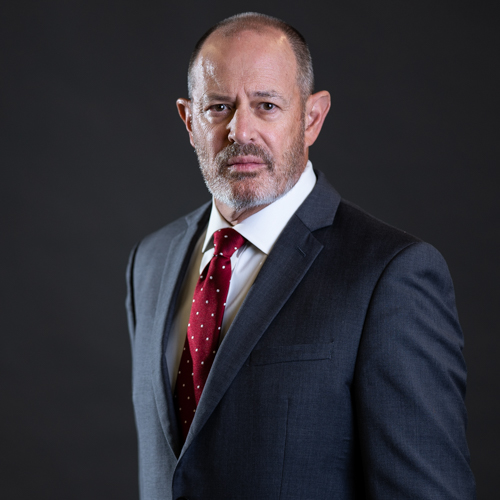
Posted on August 8, 2022
Twelve Reasons for Negligent Discharges
CCW Safe National Trial Counsel Don West suggested to me that I write on article on the reasons that Negligent Discharges might occur for the benefit of CCW Safe readers. I immediately agreed, put it on my list of things to do, and two weeks later when I sat down to write the article, it occurred to me that there were at least twelve possible reasons, and likely more. I did not realize that by suggesting this topic, Don was doing me a large favor. Until now, I knew multiple ways to avoid negligent discharges, but had not taken the time it would take to be able to clearly articulate those reasons to others (and perhaps even myself).
What is a Negligent Discharge, and how does it differ from an Accidental Discharge? Accidents happen. Some accidents are unavoidable, others not. For the most part, the user of the firearm that was unintentionally discharged bears the responsibility. Exceptions can happen, mostly as a result of a manufacturing defect that came from the factory, which is why we never let the muzzle cover anything that we are not willing to shoot and possibly destroy. Having said that, I think it might be more realistic to say that I only allow my muzzle to cover those things I wish to shoot or in the safest possible position at the time, which might be a floor, brick wall, etc., as I really don’t want to see those items shot either. A Negligent Discharge is a direct result of user failure, which can stem from ignorance, carelessness, recklessness, inattention, or any combination of the four. In no particular order, likely causes of a Negligent Discharge probably stem from one or more violations of the following rules:
- Ignorance of the four most basic rule of firearm safety.
- Treat all guns as if they were always loaded.
- Never let the muzzle cover anything that you are not willing to destroy.
- Keep your finger off the trigger until your sights are on the target and you have made the decision to shoot.
- Be sure of your target and what is behind it.
- Not keeping the trigger finger straight, above the trigger guard, and on the highest possible index point on the receiver or slide, whichever is applicable (and the highest). This is referred to as High Register.
- Insufficient gun handling practice with the trigger finger in High Register when appropriate. It may take months of constant practice to make safe gun handling a reflexive action.
- When holstering, failure to go High Register, which may allow the trigger finger to contact the top of the holster upon the pistol being inserted into its final holstered position. Continuing to insert the pistol with the finger on the trigger has a high probability of causing a Negligent Discharge. Ideally, the concealed carrier should also keep their support hand anchored upon their torso (higher is better) while holstering. Failure to do so may result in the concealed carrier shooting one or more of the fingers of the support hand if they are attempting to locate or stabilize the holster with that hand.
- Not clearing the firearm properly, including visual and tactile confirmation that the chamber is empty. Shooters may the remove the magazine and forget to remove the round in the chamber. On occasion, the extractor slips off the unfired case and leaves the same round in the chamber. A visual and tactile check can verify this if this has occurred.
- Not removing all ammunition on and around the concealed carrier prior to dry-fire practice. It is best to have no ammunition in the same room or general area during dry-fire practice.
- Leaving a firearm loaded, half-loaded, or unloaded in an area where unauthorized persons can access it.
- Not unloading the firearm before performing an inspection of it, much less taking some action with it (no matter how minor) other than shooting.
- Failing to safe or de-cock a firearm when doing anything other than shooting. Negligent discharges have taken place when the trigger in a fully cocked handgun comes in contact with web gear, backpacks, seat belts, etc.
- Unsafe aftermarket trigger jobs. Firearms have been known to fire when a round is chambered. I have seen this happen on an AR-15 with a factory trigger.
- “Outrunning your headlights”, to quote Master Instructor Tom Givens. Shooters can easily shoot their guns faster than they can process what they are seeing and react. The result can easily be that a concealed carrier in an otherwise lawful defensible shooting situation sends a round down range after their assailant dropped his or her own gun, turned around and started running away, or even moved slightly. Worst case-case scenarios can include second-degree murder, negligent homicide, or manslaughter charges if the District Attorney claims the concealed carrier was attempting to “finish off” the violent criminal actor, or a missed round struck and injured or killed an innocent third party.
- Engaging in multi-tasking while playing with firearms, loading, sorting gear, and cleaning. Each of those tasks should be done in an area and at a time where distractions can be minimized. There is always time for television, scotch, and lively conversation with others later.
In summary, this is by no means a complete list, and there exists multiple variations or sub-sets of these twelve reasons that were not covered here. Some of the most unsafe gun handling I ever seen has been committed by experienced firearm users. The drivers behind many a firearm-related tragedy has been alcohol and/or complacency. The concealed carrier should keep this in mind the next time they feel the temptation to just “bend the rules this one time.”

STEVE MOSES BIO:
Steve Moses has been a defensive firearms trainer for over 26 years and is a licensed Texas Personal Protection Officer with 7 years of experience performing as shift lead on a church security detail for a D/FW area metro-church. Steve is a co-owner and Director of Training for Palisade Training Group, LLC based in Dallas, Texas. Moses is a retired deputy constable and spent over 10 years on a multi-precinct Special Response Team. He owns multiple instructor certifications, including Rangemaster Advanced Handgun Instructor and Defensive Shotgun Instructor, Red Zone Knife Defense Instructor and Adaptive Striking Foundations Instructor, Modern Samurai Project Red Dot Sight Instructor, and State of Texas Personal Protection Officer Instructor. Steve holds a BJJ Brown Belt in Relson Gracie Jiu Jitsu. He is a content contributor for CCW Safe and writes weekly articles on various subjects of interest to concealed carriers. Moses shoots competitively and holds an IDPA Expert rating. Steve is an annual presenter at the Rangemaster Tactical Conference.